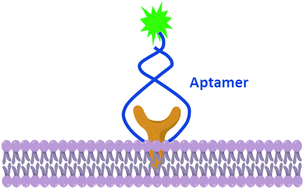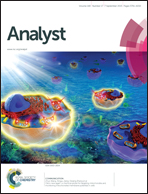Cell-SELEX based selection and optimization of DNA aptamers for specific recognition of human cholangiocarcinoma QBC-939 cells†
Abstract
Cholangiocarcinoma (CCA) is a very aggressive biliary tract malignancy with no efficient early diagnosis and therapeutics available, so there is a call for effective molecular probes. Herein, we performed cell-based systematic evolution of ligands by exponential enrichment (cell-SELEX) to obtain aptamers for the specific recognition of human cholangiocarcinoma QBC-939 cells. By coordinating sequence homology analysis and secondary structure analysis, we successfully obtained two aptamers with dissociation constants (Kd) in the low nanomolar range. A 23 nt truncated sequence was identified after further analysis on the secondary structure. More importantly, because hepatocellular carcinoma SMMC-7721 cells were employed as the control in the counter selection, the obtained aptamers demonstrated excellent specificity to the target cells, and no binding to several other hepatocellular carcinoma cell lines was observed. Moreover, the aptamers were initially found to recognize membrane proteins, giving them great potential in the field of biomarker discovery. These newly generated aptamers may play a key role in the early diagnosis and clinical treatment of CCA.


 Please wait while we load your content...
Please wait while we load your content...